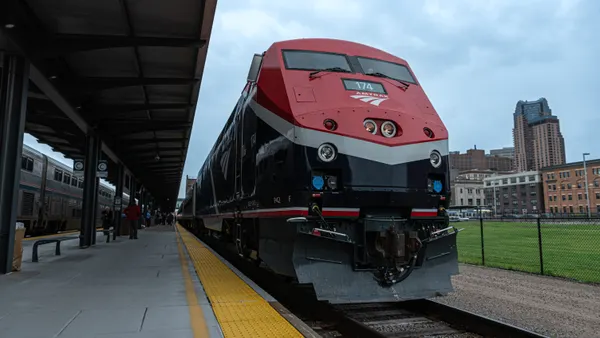Dive Brief:
- Uber aims to increase its use of electric vehicles (EVs) through a new "EV Champions Initiative" that will offer cash incentives and new app features to drivers that use electric cars. The ride-sharing company will also seek to deploy more shared EVs.
- Uber plans to deliver at least 5 million rides in EVs over the next year.
- The initiative, which builds on pilot programs in Pittsburgh and Portland, OR, will start in seven cities: Austin, TX; Los Angeles; Montreal; Sacramento, CA; San Diego; San Francisco; and Seattle. Initiative partners include the Rocky Mountain Institute and Plug-in America, electric utilities and the University of California Davis Institute of Transportation Studies.
Dive Insight:
Uber’s incentives come after a year of discussion with the service’s EV drivers, who complained that they lose passengers during time when they have to charge their vehicles, and have to contend with a lack of charging infrastructure. Drivers will now get new app features that give them a 30-minute preview of their rides, helping to alleviate range anxiety. Cash incentives — which will vary by city — are also meant to ensure that drivers can be competitive despite the high upfront cost and difficulties in operating the cars.
The incentives aren’t just meant to help Uber, but lend the ride-share company’s weight to other EV educational efforts. Drivers or potential buyers may not know about state and federal tax incentives, so Uber will work with the nonprofit Veloz to increase education. Riders will also get a special alert if their driver is in an electric vehicle, a move to increase familiarity. By collecting data and spreading the word about electric vehicles, Uber’s initiative can make cities better adapted to the cars, both for the unique needs of ride-share companies and for the average consumer.
The announcement also comes just two months after Lyft announced that it would purchase carbon offsets for its rides in order to become carbon neutral. The environmental impact of ride-sharing is still being studied, but research has shown that the companies can play a role in congestion, even as they offer alternatives to car ownership. Both companies are not just looking at cleaner fuel vehicles, but even other modes of transportation like bike- and shooter-sharing services. As cities set sustainability goals, companies need to up their game to make sure they are not working against emission reduction goals.
"We see the writing on the wall," Adam Gromis, Uber’s head of sustainability, told the Los Angeles Times. "Unless we can be delivering a more efficient form of mobility, we won’t be providing a good solution that cities need."











